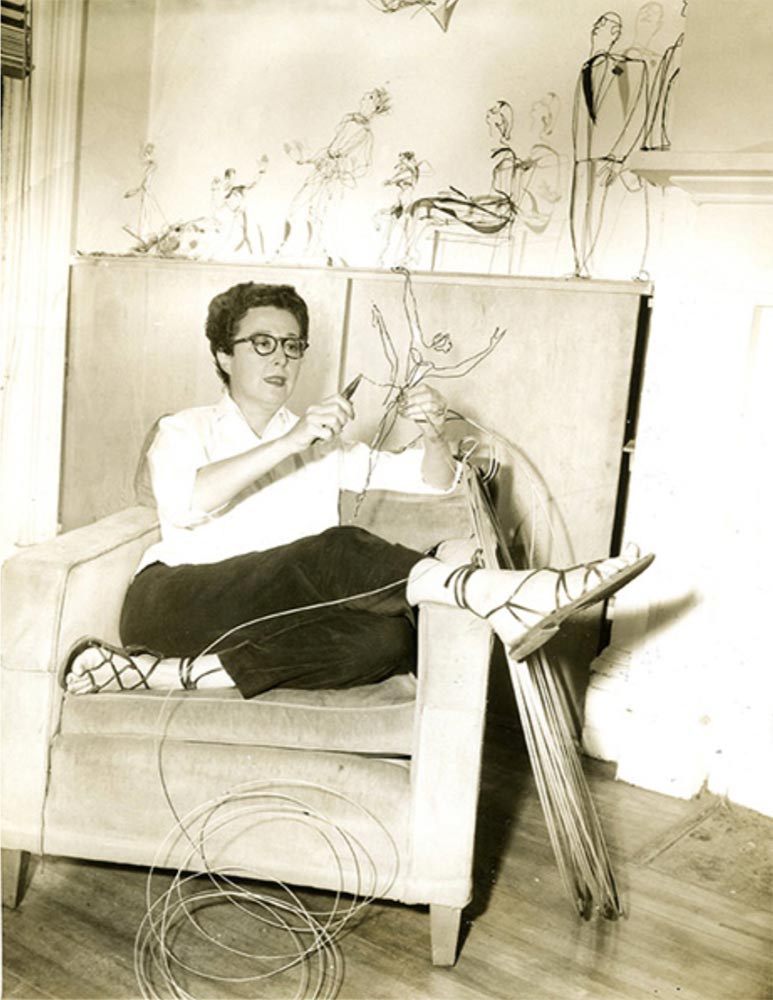88. Mollie Tureske
| Life Dates | 1909-2002 |
| Place of Birth | Russia |
| Place of Death | New York, NY, USA |
| Birth Name | Mollie Tureskey |
Mollie Tureske was born in Russia, second child of Solomon and Sarah Tureskey (note: Mollie opted to Anglicize her name in adulthood).1 Her family emigrated to the United States in the early 1910s and settled in Portland, Maine. There, her father worked as a clothing merchant, and her mother sadly died sometime before the 1930s census.2 After attending high school locally in Portland, Tureske pursued art studies at the Portland School of Fine Art (now the Maine College of Art). She also studied fashion art in Boston at an unknown school. After moving to New York City, Tureske worked as a teacher at the Stuyvesant Neighborhood House, a Jewish settlement house at 74 St. Marks Place, and the Bentley School, a private elementary school in Manhattan. By 1946, she was living in the heart of Greenwich Village, at 309 West Fourth Street, just blocks away from Atelier 17’s classroom at the New School and its second location on East Twelfth Street.3 She began working at Atelier 17 in 1946 and exhibited with the group at the Laurel Gallery in 1949 with an engraving and soft ground etching titled Floating. Unfortunately, this print and others by Tureske have not been located. In addition to Atelier 17, she studied with Hans Hofmann, spending several summers during the 1950s at his school in Provincetown. By the mid-1950s, Tureske concentrated primarily on making whimsical wire sculpture, reminiscent of Alexander Calder’s wire creations. These large sculptures were both stand-alone pieces, but also found a place in the store windows of upscale clothing stores like Bergdorf Goodman, Gunther Jaeckel, Forstmann Woolens, and also in theatrical contexts as stage settings.4 Turekse continued to live in New York City for the remainder of her life, residing at the Westbeth Artists House, though nothing further is known about her artistic activities.
Notes
- A biography written by David Hall, owner of David Hall Fine Art, based in Wellesley, MA, outlines the major chronology of Tureske’s life. Unless otherwise cited, biographical information comes from Hall’s research. Hall purchased a group of Tureske’s work after her death from her niece or nephew. ↩
- Early biographical details courtesy of census records: 1920, Census Place: Portland Ward 2, Cumberland, Maine; Roll: T625_639; Page: 28A; Enumeration District: 31; 1930, Portland, Cumberland, Maine; Page: 6B; Enumeration District: 0038; FHL microfilm: 2340565. ↩
- Ancestry.com. U.S. City Directories, 1822-1995. Provo, UT: Ancestry.com Operations, Inc., 2011. ↩
- “‘Orpheus in the Underworld’ Premiere Set for Music CIrcus,” The Central New Jersey Home News, August 16, 1953, 11; Joan Danforth, “Artist Draws with Wire for Airy Sculpturing,” New York Herald Tribune, July 11, 1955, 12. ↩


